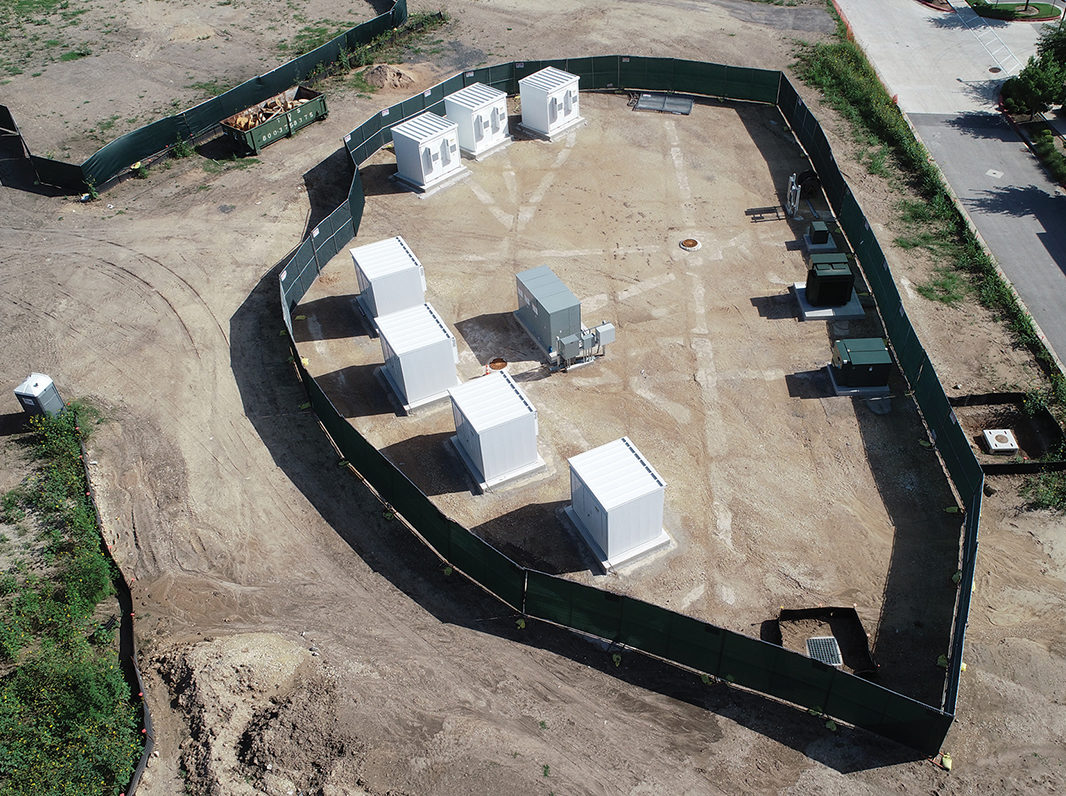
The Austin Energy SHINES project optimizes utility-scale and behind-the-meter resources with a mix of centralized and distributed intelligent systems.
Austin Energy is transitioning rapidly into a utility with significantly high levels of renewable resources. In 2015, only 20% of electricity supplied to customers came from renewable resources. By 2016, the number was 30%. As the utility approaches the tipping point of renewable resources being the majority — with its next major milestone of 65% renewable energy by 2027 — the transformation becomes profound. Local consumer adoption of renewables further increases the presence of distributed energy resources (DERs) and their impact on the distribution grid. As a large vertically integrated public utility in a deregulated wholesale energy-only market, the change requires addressing complex and interrelated challenges that are both economical and operational.
Recognizing that versions of the same dilemmas are playing out for utilities across the U.S. in many different markets, geographies and regulatory climates, Austin Energy sought funding from the U.S. Department of Energy Solar Energy Technologies Office (SETO) program to take an approach that could establish a model for other utilities. In 2016, it gained partial funding when it was granted US$4.3 million, the largest award to date under the Sustainable and Holistic Integration of Energy Storage and Solar (SHINES) program. The objectives of the Austin SHINES project is to not only help Austin Energy to achieve its goals but also contribute to advancing utility knowledge for the industry at large.
The project goals are as follows:
- Provide a template DER management platform demonstrating repeatable operational methodologies relevant to any region
- Maximize the penetration of distributed solar, valued with a reliability factor, to meet consumer wants and needs
- Enable distribution utilities to mitigate potential negative impacts of high penetration levels of photovoltaics (PV) and other renewable resources
- Provide a system-wide levelized cost-of-energy (SLCOE) metric for evaluating the grid’s optimal mix of resources in any region or market structure.

Schematic of distributed controllers in field and centralized (DERO) presence in control room, along with data that informs distributed generation-DERO analysis.
Renewable Goals
The long game for Austin Energy is to meet the renewable goals it has set, which reflect the Austin community’s values of environmental stewardship and conservation while balancing the goals of reliability and affordability for the utility and its 460,000 customers. These goals include the following:
- Offsetting 65% of customer load with renewable resources by 2027
- Recording 1000 MW of savings from energy efficiency and demand response by 2027
- Deploying 750-MW utility-scale solar and 200 MW of local solar, including 100-MW customer-sited PV by 2025
- Integrating 10-MW battery storage and 20-MW thermal energy storage by 2025
- Achieving net-zero community-wide greenhouse gases by 2050.
SHINES Project
In a sense, the SHINES project set out to make things complicated. It sought to include the widest possible variety of resources to rigorously study, test, and evaluate the best approach and enable flexibility for different platforms, even as it continued (and continues) to add renewable resources. Throughout 2016-2017, the utility considered and collaborated with multiple partners to assemble what eventually came to include nearly 6 MW of resources on both sides of the meter to be managed within the SHINES program:
- Utility-scale energy storage plus PV: A 2.6-MW community solar farm and two energy storage systems, each 1.5-MW/3-MWh Li-ion
- Commercial energy storage plus PV: Aggregated storage installations at three sites, one with 18-kW/36-kWh Li-ion battery storage and two with 72-kW/144-kWh Li-ion battery storage (all sites have existing solar of 300+ kW)
- Residential energy storage plus PV: Aggregated storage installations at six homes (10 kWh each) plus one electric vehicle connected in vehicle-to-grid fashion (28 kWh available for grid dispatch) as well as an additional 12 homes with utility-controlled solar (through smart inverters) and six homes with autonomous settings on their solar smart inverters.
Value from the Whole
Why were these DERs selected? Each was chosen for its ability to test and measure an important use case and value proposition. Austin Energy identified three main categories of value: contributions to system reliability, enhancing customer satisfaction, and market-related economic benefits.
For example, the grid-scale energy storage systems at both the Kingsbery and Mueller locations provide market benefits through two different types of control applications. They can participate in day-ahead energy arbitrage and realize economic value through the price differential. The utility also can apply real-time price dispatching to gain value by reacting to price spikes as they happen. In terms of reliability, the Kingsbery and Mueller energy storage system (ESS) also participates in voltage support programs, reducing losses and increasing the amount of solar generation that can be deployed. Similarly, by managing distribution congestion with the ESS at both locations, the utility safeguards local grid reliability.

Construction underway in 2018 at Mueller energy storage system.

Workers installed Li-ion Y.Cubes as part of utility-scale energy storage in Mueller neighborhood.
The aggregated ESSs at residential customer locations also participate in the aforementioned applications and have the additional benefit of being used for peak load reduction. Far from seeing residential DER as a threat to the utility, Austin Energy is finding a win-win in which customer storage can be tapped to help lower the utility’s transmission cost obligations. Similarly, through the aggregated energy storage at commercial locations, the utility is reducing demand charges — lowering the customer’s bills while realizing system benefits.
At this time, the aggregated ESS at commercial locations can deliver all the economic benefits (utility peak load reduction, day-ahead arbitrage and real-time price dispatch), but it is not set up to realize reliability benefits. Some of this is because of the nature of aggregation, where the location of assets is not necessarily known to utility control systems. Voltage support and congestion management can be highly location specific and, under certain control structures, this value may be difficult for certain assets to realize. This is a case where the technology is capable but the costs of deploying a program could outweigh the benefits provided.

View of Austin Energy’s utility-scale ESS with community solar at La Loma solar farm.

Systems scheduling page of distributed generation-DERO shows plan for fleet of ESSs.
Overall, while some of the DERs contribute value in nearly all areas, others may offer more streamlined benefits. For example, voltage support is the only application use case for the utility-controlled residential solar. However, when viewed together, the assets deliver a cohesive and comprehensive impact — if they are controlled and dispatched optimally.
Control Systems
The heart of the project is the distributed energy resource management system (DERMS), which really is a system of systems that combines local and distributed intelligent controls in an approach collaboratively designed with Doosan GridTech.
Austin Energy uses local control units — the Doosan GridTech Intelligent Controller (DG-IC) for grid-scale storage and the Smart ConnectDER for residential solar — and aggregator platforms at the grid edge. Each can manage DER assets in real time. These local controllers also provide data to inform centralized operations. These distributed controllers are smart and autonomous, so they can operate independently or collaboratively through a centralized control system. Today, this provides flexibility to adapt to different scenarios as the utility observes and defines the best control protocols for different use cases. In the future, the local controllers’ ability to act independently could enable the utility to island its energy resources if it wanted to run microgrids in emergency situations.
Austin Energy also is using the local control systems to address power quality needs. The controllers help to prioritize operating modes for real-power use cases, such as power smoothing and frequency response, and for reactive-power use cases like power-factor correction and volt/volt-ampere-reactive (VAR) support. The utility is studying the most effective ways to address the impact of several different types of renewable resources on power quality around points of intertie with the grid.
The local control units and aggregator platforms communicate using open standards, enabling Austin Energy to engage securely and reliably with multiple present and future technologies. This is especially important at the grid edge, where the utility faces an ever-expanding number and type of (potentially) connected resources associated with commercial and residential consumers and prosumers.


View from La Loma community solar farm toward Austin Energy’s Kingsbery ESS.
Centralized Control
Within Austin Energy’s operations centers, Doosan Gridtech’s Distributed Energy Resources Optimizer (DERO) acts as the central DERMS platform, informed by the utility’s existing control systems, including supervisory control and data acquisition. It receives asset data, like resource status and availability, fed to it by the local control units and aggregator platforms. It also acquires data from many other sources, including weather, price, and load forecasts and real-time market prices.

Battery container, inverter and switchgear at dusk at Austin Energy’s Kingsbery substation.
Austin Energy uses DERO to facilitate a two-way flow of data that encompasses all resources and accommodates multiple schedules and intervals of data production. Like the distributed control systems, this centralized system also uses the open standards Austin Energy sees as critical to its plan to scale up as more DERs come on-line.
Value and Reliability
Within the control centers, DERO gets down to the business of optimizing assets. What does this mean? The DERMS acts continuously (and on command) to perform analysis of data to yield actionable findings to inform distribution system operators and power schedulers. The value is in the details, where analysis of precise timing and the impact of aggregating resources can yield powerful insights.
Which distributed resources should be dispatched in which way to deliver optimal value? What amount of data is necessary to achieve sufficient results? How extensively should sensors or controls be distributed? DERO answers these questions, effectively aggregating and optimizing the value of
DER while applying a value for reliability in accordance with user preferences. System levelized cost of energy (LCOE) encompasses the cost and performance value of all assets within a defined distribution circuit. It represents the sum of three costs — the capital cost of all system equipment, the
operating cost of all system equipment and system LCOE to serve load — divided by all load served in the system (kilowatt-hours).
By synthesizing the streams of operational and market-based information, DERO derives a system-wide schedule or dispatch plan. It issues ongoing recommendations to grid operators and power schedules as well as acts on those recommendations according to user preferences. DERO then makes real-time adjustments in response to the changing grid, market and resource conditions throughout each day and night.
Austin Energy is using DERO to dig into the complexities beyond a single use case. It is not just knowing the value of one asset or set of assets but understanding how they can be used optimally to extract value that benefits the utility, its customers and other engaged stakeholders of DER. The solutions worked out daily are informing a practice and approach to be applied over time and at scale.
Findings and Principles
The Austin SHINES project continues to expand, with full deployment complete and a period of demonstration and study underway to report findings by the end of 2019. The knowledge outputs of the project will include Austin Energy’s defined plan to scale DER integration across its enterprise according to the optimal design and configuration; details on the utility’s control and ownership use-case findings; shareable principles extracted from the system-wide levelized cost of energy methodology; and observations on the performance of the DERO platform.
Clarity is emerging around an approach built on the principles of unified control systems with centralized and distributed intelligence as well as the need for holistic analysis that blends technical and economic objectives. As the utility operates and observes, it is building a model to address one of the industry’s key challenges — how best to maximize value and reduce the levelized cost of energy across an entire enterprise populated with DER.
For more information:
Austin Energy | www.austinenergy.com
Doosan GridTech | www.doosangridtech.com
Lisa Martin is a program manager of advanced technologies at Austin Energy. She currently is the project manager for the Austin Sustainable and Holistic Integration of Energy Storage and Solar (SHINES) project, which established an open standards-based distributed energy resources management platform to integrate and optimize distributed energy resources at several levels along the utility value chain. Previously, Martin worked for Southern California Edison in the fields of energy markets and power and gas origination. She has a BSEE degree from Christian Brothers University and an MBA degree in operations management from the University of Illinois. Martin is a registered professional engineer in the state of Texas.














